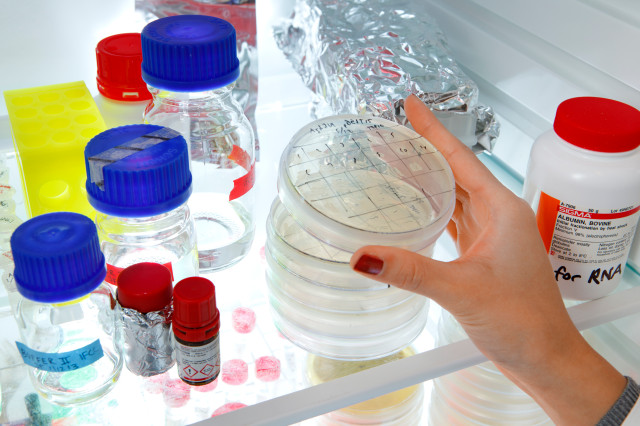Description of the different techniques that are applied for subcellular imaging. Applications of basic knowledge in mathematics that are used for imaging. Merging of results from the different technologies. Practical exercises demonstrating principals of the methods. Computer-based exercises.
HL2030 Subcellular Imaging, smaller course 6.0 credits
This course has been discontinued.
Decision to discontinue this course:
No information inserted
Information per course offering
Course offerings are missing for current or upcoming semesters.
Course syllabus as PDF
Please note: all information from the Course syllabus is available on this page in an accessible format.
Course syllabus HL2030 (Autumn 2012–)Content and learning outcomes
Course contents
Intended learning outcomes
The course in subcellular imaging will give an insight into methods that can be used to obtain a detailed picture of biological structure. Interactions with biotechnological materials like implants and nanoparticles will also be studied. After the course, paritcipants should be able to:
- Apply mathematical concepts for imaging techniques.
- Describe different techniques for specimen preparation.
- Describe modern light microscopy techniques.
- Understand the principels of electron micrcoscopy.
- Understand the basic concepts of structure determínation with X-rays.
- Understand the principles of magnetic resonance spectroscopy.
- Understand the principles of mass spectrometry.
- Apply relevant image processing methods.
- Apply relevant methods for modelling.
- Assimilate the contents of literature in the field of structural biotechnology.
Literature and preparations
Specific prerequisites
General knowledge of Medical engineering, Anatomy, Physiology and Cell Biology.
Literature
Kompendium och utdelat material på föreläsningarna/Compendium and hand-outs
Examination and completion
Grading scale
Examination
- LAB2 - Computer Exercise, 0.5 credits, grading scale: P, F
- TEN1 - Examination, 5.0 credits, grading scale: A, B, C, D, E, FX, F
- LAB1 - Lab Work, 0.5 credits, grading scale: P, F
Based on recommendation from KTH’s coordinator for disabilities, the examiner will decide how to adapt an examination for students with documented disability.
The examiner may apply another examination format when re-examining individual students.
If the course is discontinued, students may request to be examined during the following two academic years.
Examiner
Ethical approach
- All members of a group are responsible for the group's work.
- In any assessment, every student shall honestly disclose any help received and sources used.
- In an oral assessment, every student shall be able to present and answer questions about the entire assignment and solution.
Further information
Course room in Canvas
Offered by
Main field of study
Education cycle
Supplementary information
The course will only be given if at least six students have signed up for it